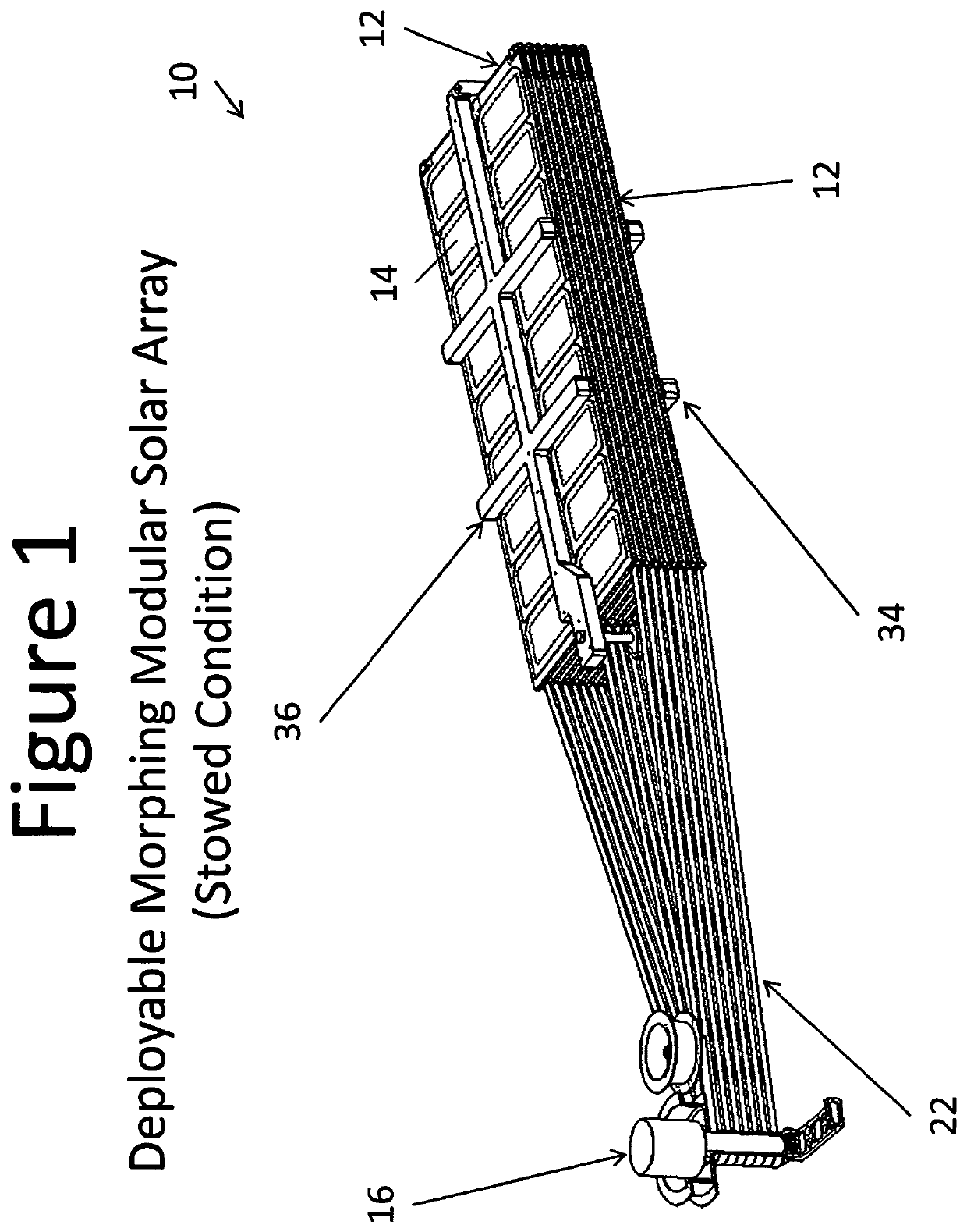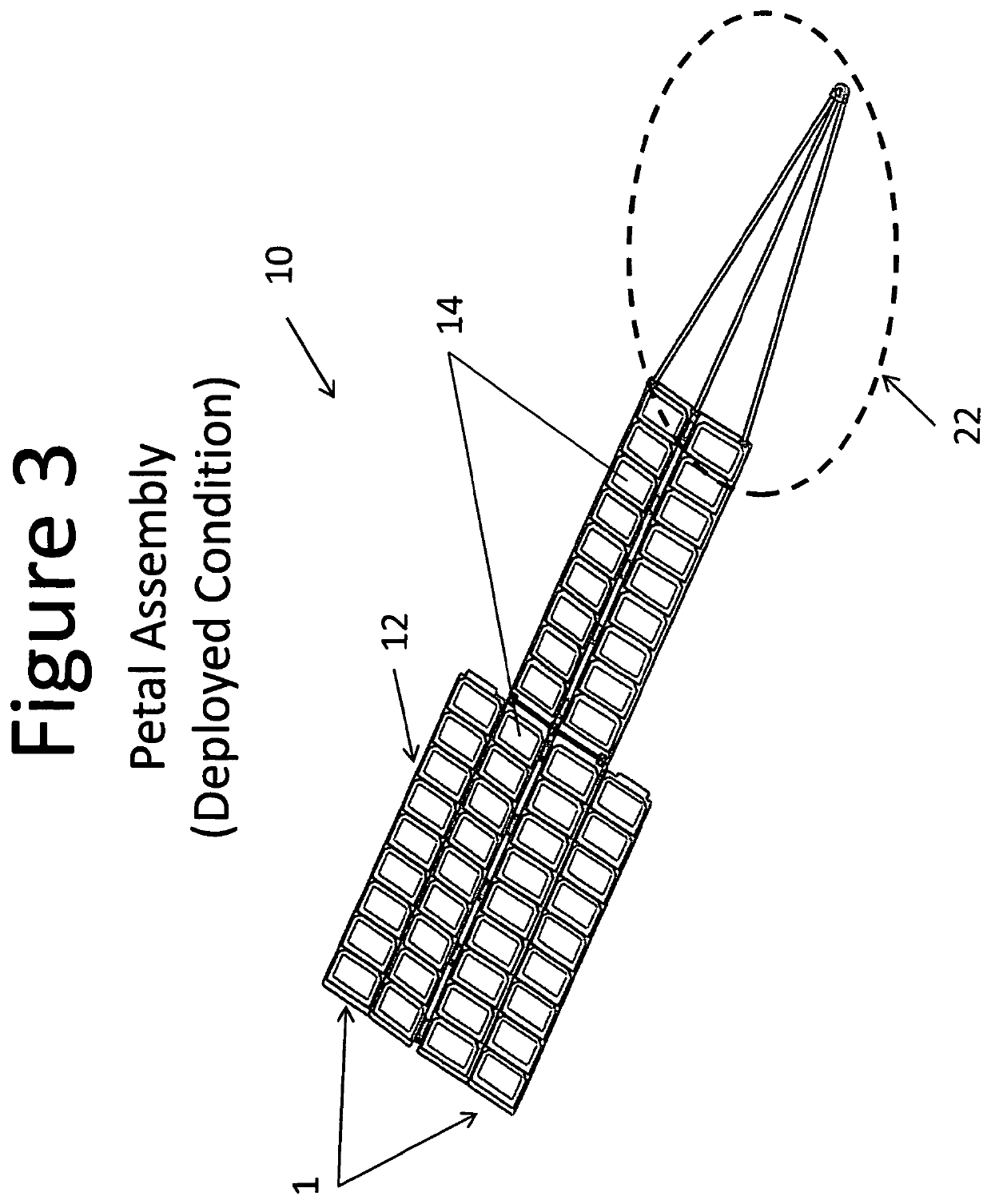Panel for use in a deployable and cantilevered solar array structure
a solar array and cantilever technology, applied in the direction of pv power plants, transportation and packaging,cosmonautic vehicles, etc., can solve the problems of increasing the area moment of inertia of the area, limiting the distance that the panel can extend away from the support structure, and not all of the solar cells supported by the panel are either functional or only marginally functional, etc., to achieve the effect of increasing the area moment of inertia
- Summary
- Abstract
- Description
- Claims
- Application Information
AI Technical Summary
Benefits of technology
Problems solved by technology
Method used
Image
Examples
second embodiment
[0063]With reference to FIGS. 15, 16, 17A, and 17B, a panel 100 suitable for use or adaptable for use in a deployable and cantilevered solar array structure is described. The panel 100 exhibits a high moment of inertia and a high stiffness that allows the panel to extend farther, or to be used in combination with other panels to extend farther, in a cantilevered solar array structure than would be possible with a comparable planar panel. By being able to extend farther in a cantilevered solar array structure, the panel or combination of panels is capable of providing a greater amount of surface area that can be occupied by solar cells than would be possible with a comparable planar panel. The panel 100 is capable of being used with a broad range of deployable and cantilevered solar array structures. For instance, the panel 100 is capable of being used in deployable and cantilevered solar array structures that only employ a single panel or that employ several of the panels. With resp...
first embodiment
[0075]With reference to FIGS. 18A-18B, 19, and 20, a hinge 130 that: (a) accommodates rotation of the panel 100 about hinge line that is straight when the panel is in the stowed state and bent when the panel is in the deployed state is described and (b) engages another structure of a deployable and cantilevered solar array structure with components that do not move in any transition between the stowed and deployed states of the panel. As such, the hinge 130 must accommodate three degrees of freedom, two rotational and one translational. One of the rotational degrees of freedom is associated with rotation of the panel 100 relative to the other structure to which the panel is connected by the hinge. The other rotational degree of freedom and the translational degree of freedom are associated with the first and second planar panel sections 108A, 108B rotating with respect to one another between the stowed and deployed states. The translational degree of freedom relates to points on the...
PUM
 Login to View More
Login to View More Abstract
Description
Claims
Application Information
 Login to View More
Login to View More - R&D
- Intellectual Property
- Life Sciences
- Materials
- Tech Scout
- Unparalleled Data Quality
- Higher Quality Content
- 60% Fewer Hallucinations
Browse by: Latest US Patents, China's latest patents, Technical Efficacy Thesaurus, Application Domain, Technology Topic, Popular Technical Reports.
© 2025 PatSnap. All rights reserved.Legal|Privacy policy|Modern Slavery Act Transparency Statement|Sitemap|About US| Contact US: help@patsnap.com



